Channel Builder
|
Topics: |
iWay Service Manager (ISM) defines a channel as a container of components through which messages flow. The Channel Builder in iWay Integration Tools (iIT) is a tool used to build channels using iWay components.
Channels contain references to one inlet, multiple routes, and outlets.
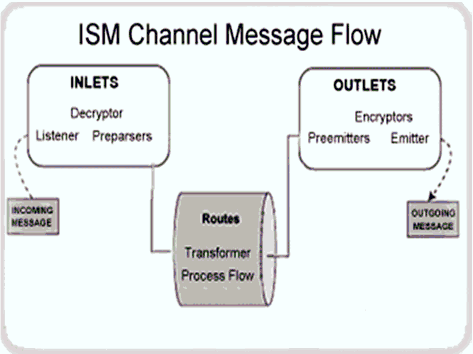
The Channel Builder allows you to:
- Build and edit channels.
- Import and export channels.
The right-click options are shown in the following image.
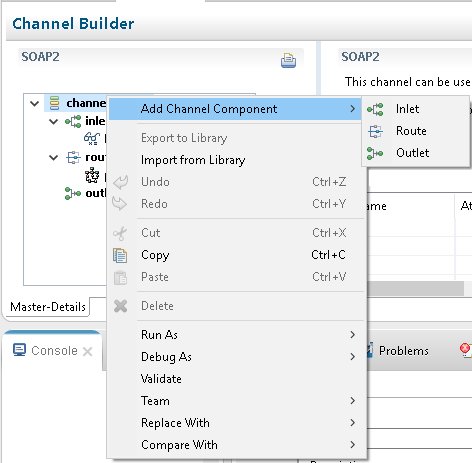
The following diagram illustrates the Channel Builder component logic structure.
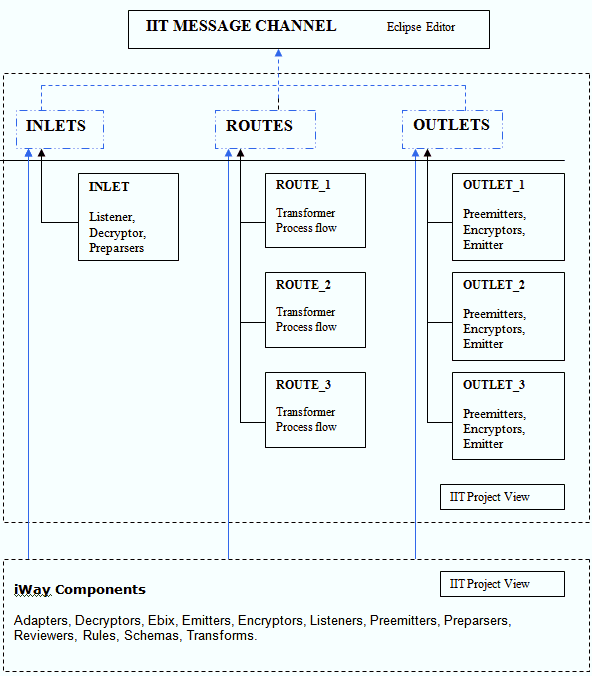
Channel Builder and Component Editors
The following image shows the presentation of a channel and its composing components in Application Explorer.
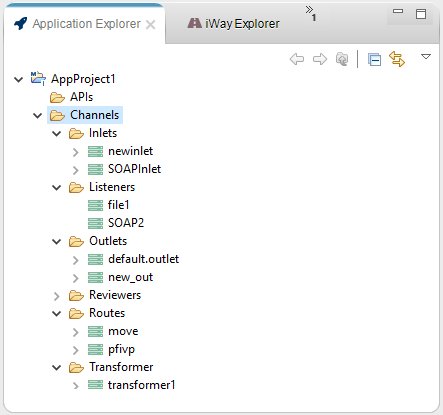
The following image shows the SOAP2 channel in the Channel Builder with a corresponding inlet, route, and outlet.
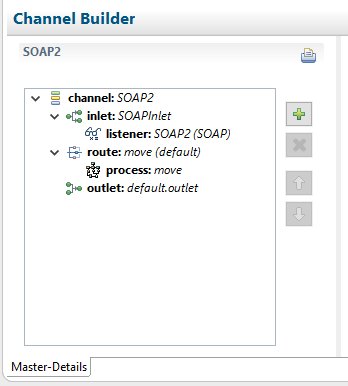
Clicking a component opens an editor on the right. The following image shows a listener and its properties in the Component Editor.

Creating Channels Using Channel Builder
|
How to: |
This section describes how to create channels using Channel Builder.
Procedure: How to Create a New Channel
To create a new channel:
- In the Application Explorer tab, expand your application project. Right-click the Channels folder, select New and then click Channel, as shown in the following image.
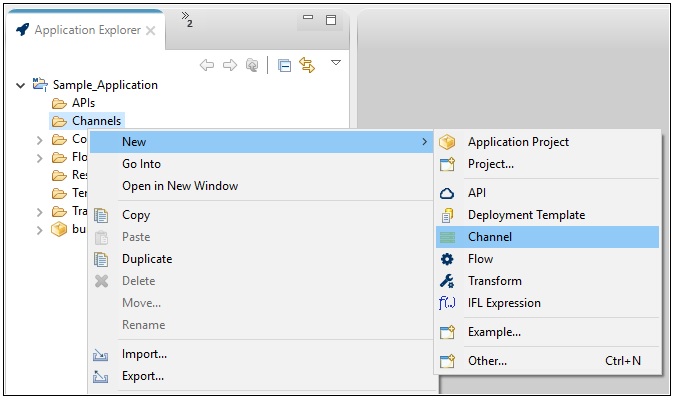
The Channel Object dialog opens, as shown in the following image.
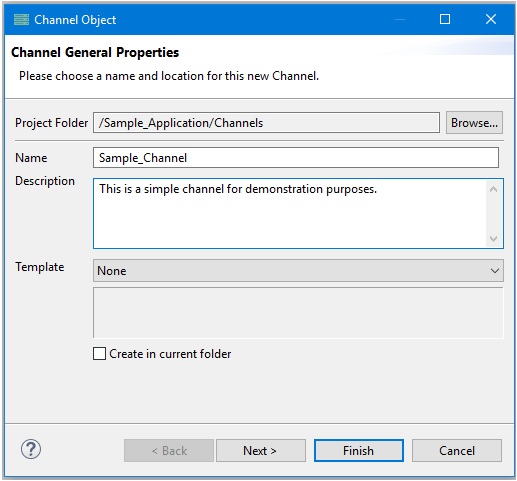
- Enter a name for your channel (for example, Sample_Channel), a description (optional), and then click Finish
Your new channel (Sample_Channel) is added to the Channels subfolder within your application project, as shown in the following image.
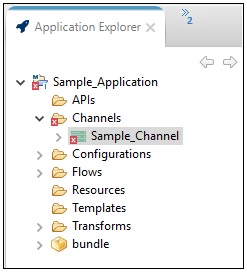
Since this channel has not yet been configured, the red x icons are displayed as shown. You can ignore these error indicators for now, which will be removed once the channel is configured.
The Channel Builder also opens as a new tab (containing the name of your channel) in the workspace area where you can start adding your channel components, as shown in the following image.
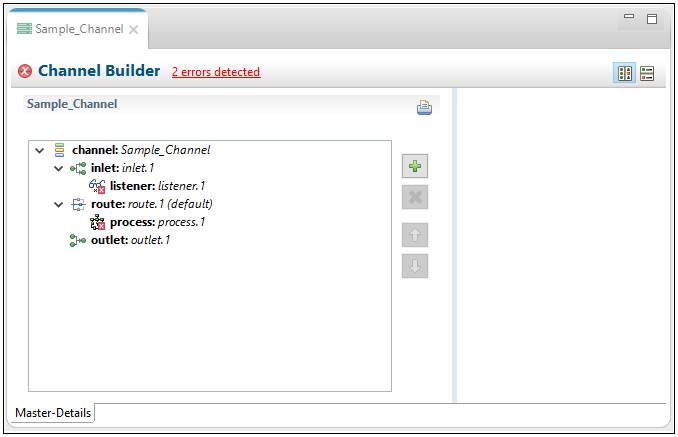
Once again, error indicators are displayed, which now indicate that an inlet and a route must be defined for this channel.
- To define your listener, click listener:listener.1 under the inlet: inlet.1 node in the left pane and then change type in the right pane, as shown in the following image.

The Modify listener type dialog opens, as shown in the following image.
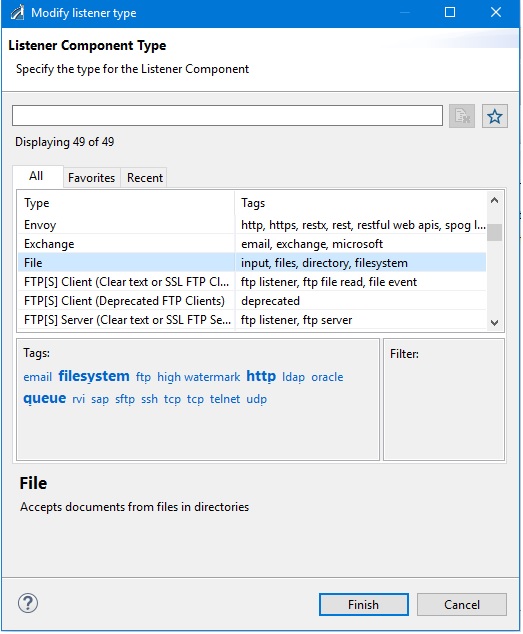
- Select File from the list of available listener types, which indicates a File listener, and then click Finish.
The configuration parameters for the File listener are displayed in the right pane of the Channel Builder, as shown in the following image.
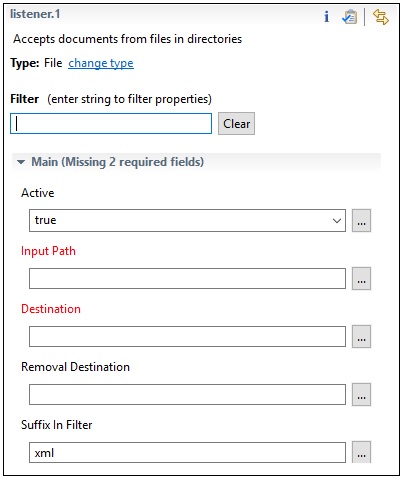
Any required configuration parameters are identified by red text. For example, in the case of a File listener, the Input Path and Destination parameters are required.
- Specify values for the Input Path and Destination parameters, as shown in the following image.

Notice that the red text previously used to identify the Input Path and Destination parameters has been removed. In addition, one of the error indicators, which was previously shown for the undefined listener in the left pane is no longer displayed.
You are now ready to associate a process flow for the route of this channel.
- Click process:process.1 under the route: route.1 node in the left pane and then the Resource Selection icon in the right pane, as shown in the following image.
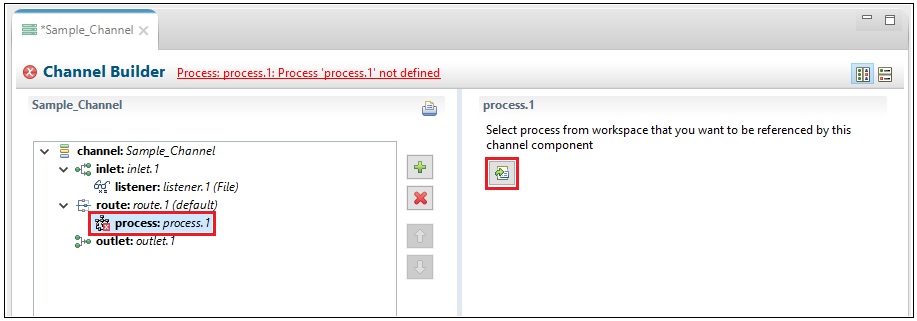
The Resource Selection dialog opens, as shown in the following image.
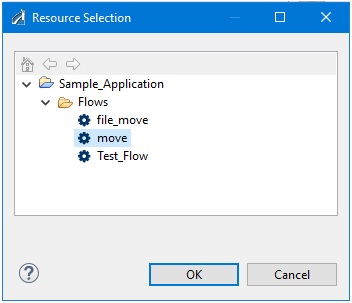
- Navigate to the Flows subfolder in your application project, select the process flow that you want to associate with the route
of your channel, and then click OK.
You are returned to the Channel Builder, as shown in the following image.

Notice that the second error indicator, which was previously shown for the undefined route in the left pane is no longer displayed.
- Click Save on the toolbar to save the changes you made to your channel, as shown in the following image.
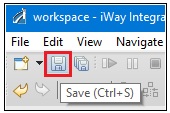
You have successfully created a new channel using Channel Builder in iIT.
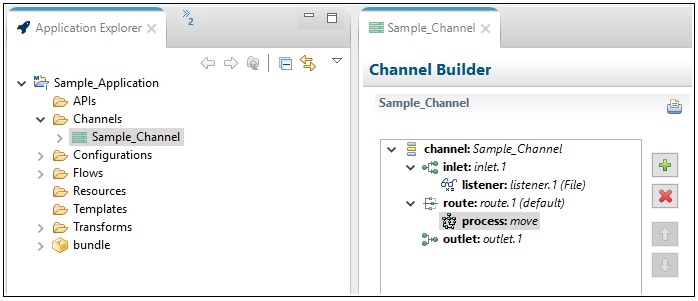
Notice that all of the error indicators, which were previously shown for this channel, are no longer displayed.